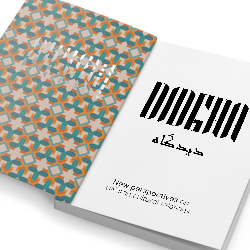Special finishing and print techniques to bring your print to life
There are a whole host of techniques that you can use to make you print publications look and feel different. All come at a cost of course, but it is money well spent when you see the final result. These finishing (the processes that occur after the printing has been done) techniques can be applied to most things, from the humble business card, brochures and annual reports and are especially useful and relevant when implying luxury, quality or simply to stand out from the crowd. A word of caution, use with moderation.
Here are a few to think about.
Paper
Paper (often called stock in the industry) makes a huge difference not just to the feel of a publication, but also to it’s look. Setting aside the four main paper types: gloss, silk, matt coated and uncoated (cartridge), there is a huge range to choose from. Using a stock with a texture or embossing changes the feel of a publication dramatically. Whether it is a ridged (or laid) finish, linen or a different colour, choosing something out of the norm is the easiest way to ‘upgrade’ a print item. Be careful as some stocks cost an absolute bomb.
Embossing or debossing
This technique uses a metal form to either make an area stand up or raise from the paper or in the instance of debossed, punched into the paper. You see this a lot on book jackets with the author’s name (if he or she are important enough) or the title of the book. Generally speaking, the bigger the area, the more the cost, but it isn’t as expensive as you might think. It’s great for making a logo stand proud but bear in mind, registration can be a bit hit-and-miss so aligning it with a print area can be tricky.
Foil blocking
Foil blocking a logo or type can give it a high quality, luxury feel. The foiled areas are applied by using a metal form that stamps the foil onto the paper. You can have almost any colour you’d like, so long as the foil comes in that colour: gold, silver, pearlised and white. Which means you can foil block onto coloured stock and that looks mint. It can be a very mechanical or very hand-made process so for big print runs, it may prove too costly (unless you are printing in China) and again, the cost is driven by the size of the area that you are using the foil.
Die cutting
Cutting a shape out of a sheet to show a ‘reveal’ below adds drama and provides an opportunity to make the document more ‘interactive’. Take a look at the Didgah book jacket designs we did that uses a die cut to reveal the title and enforce the meaning of the publication. Again, not as expensive as you might think, especially for short print runs. If you want to die cut very detailed shapes, then you need to opt for laser cutting, this can leave a little ‘burn’ on the reverse of the sheet, but these days this is less of an issue.
Stickers or bands
Simply adding a sticker or a band (a paper wrap) makes the document feel personalised. In fact, you could go one step further and personalise the sticker with the recipients name. A band around a document gives the reader the feeling of ‘breaking the seal’ and making the document feel important and an ‘event’ when opening it. You could do the same by using a sticker to seal the document along the open edge so that the user has to tear the sticker to open it. Remember, some poor mug has to sit there and apply these by hand.
Spot UV
Spot UV is a gloss or matt plastic varnish that can be used to ‘pick out’ or highlight shapes, text and images. Registration can be an issue, but I don’t think readers will really care. Sometimes, we put a matt laminated cover and then a spot UV over the area that you want to pick out. It is called Spot UV because the plastic coating is cured with a UV light. It’s not the best for the environment being plastic and all that.
And lastly….
Format
Not everything has to be A4. Take advise from the printers as they will advise on sheet size and what is economical based on the print run. What are called ‘off sizes’, not standard ‘A’ size, can make a document really different. If you think about books (again) they are almost all off sizes. Off sizes do, or can create paper waste, so do consult with the printer.
Different finishing techniques make a real difference, give them a try, or ask us to do it for you.








